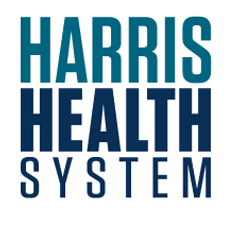Study Examining Parker-Flex Endotracheal Tube for Obese Patients
| Status: | Recruiting |
|---|---|
| Conditions: | Obesity Weight Loss |
| Therapuetic Areas: | Endocrinology |
| Healthy: | No |
| Age Range: | 21 - Any |
| Updated: | 4/21/2016 |
| Start Date: | July 2013 |
| End Date: | December 2016 |
STUDY EVALUATING THE PARKER-FLEX ENDOTRACHEAL TUBE FOR FIBEROPTIC INTUBATION ON OBESE PATIENTS
A recent article examined the use of Parker Flex-Tip tubes to standard ETTs for oral
fiberoptic intubation and concluded that there was a significant benefit in terms of
difficulty encountered when using the Parker Flex-Tip. The Parker Flex-Tip tracheal tube has
a flexible, curved, and tapered tip design different from traditional endotracheal tubes.
The design allows the tube to lie closely against the fiberoptic scope that is often used to
facilitate intubation, resulting in a smaller gap between the ETT and the fiberoptic scope.
This may allow the ETT to clear anatomic obstructions more easily. The patients they
examined had an average body mass index (BMI) categorized as normal weight. To our
knowledge, there have not been any studies that have investigated the use of the Parker
Flex-Tube for fiberoptic intubations in patients categorized as obese by BMI. Our hypothesis
is that the Parker Flex-Tip ETT results in easier passage of the ETT over a fiberoptic scope
during elective fiberoptic intubation of obese patients in comparison to a traditional ETT.
fiberoptic intubation and concluded that there was a significant benefit in terms of
difficulty encountered when using the Parker Flex-Tip. The Parker Flex-Tip tracheal tube has
a flexible, curved, and tapered tip design different from traditional endotracheal tubes.
The design allows the tube to lie closely against the fiberoptic scope that is often used to
facilitate intubation, resulting in a smaller gap between the ETT and the fiberoptic scope.
This may allow the ETT to clear anatomic obstructions more easily. The patients they
examined had an average body mass index (BMI) categorized as normal weight. To our
knowledge, there have not been any studies that have investigated the use of the Parker
Flex-Tube for fiberoptic intubations in patients categorized as obese by BMI. Our hypothesis
is that the Parker Flex-Tip ETT results in easier passage of the ETT over a fiberoptic scope
during elective fiberoptic intubation of obese patients in comparison to a traditional ETT.
This is a randomized, double-blinded study. Neither the patient nor the anesthesia
practitioner advancing the ETT will know the group to which the patient has been assigned.
On the day of surgery, participants will be randomized 1:1 to one of two groups. Both groups
will be electively intubated with a fiberoptic scope. One group will be intubated using a
Parker-Flex endotracheal tube and the second group of will be intubated with a standard
endotracheal tube. There will be an equal probability of being assigned to either group. No
placebo or control group will be used. Randomization will be computer-generated and
assignments will be enclosed in sealed envelopes to provide allocation concealment. The
anesthesiology technician involved in the case will open the envelope at the start of the
case and will not be blinded to the study, due to the fact that the technician must prepare
the endotracheal tube for the fiberoptic intubation.
practitioner advancing the ETT will know the group to which the patient has been assigned.
On the day of surgery, participants will be randomized 1:1 to one of two groups. Both groups
will be electively intubated with a fiberoptic scope. One group will be intubated using a
Parker-Flex endotracheal tube and the second group of will be intubated with a standard
endotracheal tube. There will be an equal probability of being assigned to either group. No
placebo or control group will be used. Randomization will be computer-generated and
assignments will be enclosed in sealed envelopes to provide allocation concealment. The
anesthesiology technician involved in the case will open the envelope at the start of the
case and will not be blinded to the study, due to the fact that the technician must prepare
the endotracheal tube for the fiberoptic intubation.
Inclusion Criteria:
- BMI of 30 or greater
- American Society of Anesthesiologists (ASA) Physical Status Classification I- III
- Patients scheduled for elective procedures requiring general anesthesia and
endotracheal intubation.
Exclusion Criteria:
- Predicted difficult airway based on physical exam and patient's history
- Rapid sequence intubation indicated (patients who require to be intubated as quickly
as possible)
- Prior trauma or surgery in the oropharynx/larynx
- Known abnormal laryngeal structures (tumors)
- Infectious and toxic conditions
- Cervical spine instability
- Emergency surgery
We found this trial at
1
site
1504 Taub Loop
Houston, Texas 77030
Houston, Texas 77030
(713) 873-2000

Principal Investigator: Lee C Chang, MD
Phone: 713-873-2860
Ben Taub General Hospital Located in the heart of the Texas Medical Center, Ben Taub...
Click here to add this to my saved trials